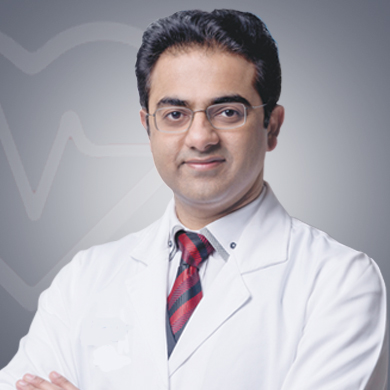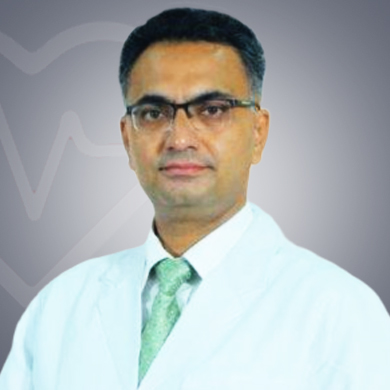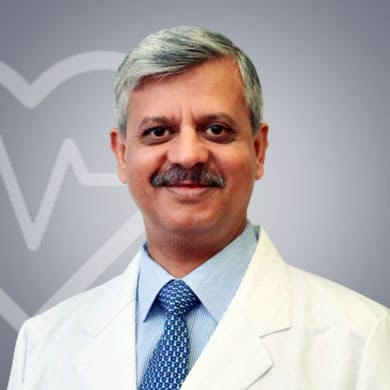What Is Knee Arthroscopy?
Arthroscopy is a surgical procedure used for the diagnosis and treatment of problems in the knee joint. During this procedure, a surgeon makes an incision and inserts a camera (known as an arthroscope) into the knee. This allows the surgeon to get a view of the inside of the joint on a high-definition monitor and investigate the problems inside the knee joint. If necessary, the same technique is used to correct the problems by using pencil-thin surgical instruments present in the arthroscope.
Why Do You Need Knee Arthroscopy?
Your doctor may recommend arthroscopy in case of knee pain to determine the source and cause of pain. Arthroscopy helps diagnose and treat knee injuries, including the following:
- Torn anterior or posterior cruciate ligaments
- A torn meniscus (the cartilage between the bones in the knee)
- Misaligned patella
- Pieces of loosened cartilage in the joint
- Removal of a Baker’s cyst
- Fractures in knee bones
- Swollen synovium (the lining in the joint)
- Scarring within joints
Preparing for Knee Arthroscopy
Before knee arthroscopy procedure, your surgeon will advise you about the preparation you need to undergo for knee arthroscopy. Be sure to tell the doctor about all the prescription or over-the-counter medications including any supplements that you are taking. Below is a detailed guide on how to prepare for knee arthroscopy:
- Assessment of General Health: Your surgeon may advise you to get a general health check-up from your family doctor to identify any problems that may interfere with the procedure.
- Preoperative Tests: Your surgeon or doctor will ask you to undergo certain tests and investigations before the surgery. This includes certain blood tests and electrocardiogram (ECG).
- Medications: Your surgeon may advise you to avoid taking certain medications such as aspirin or other non-steroidal anti-inflammatory drugs (NSAIDs) like ibuprofen and fish oil supplements as these can increase the risk of bleeding during the procedure.
- Eatables and Drinks: Depending on the type of anesthesia that the surgeon decides to use, he or she may ask you to avoid eating or drinking at least 6 to 12 hours before the surgery. This helps to prevent nausea and vomiting from anesthesia and medications.
- Arranging a Ride: Since you won’t be able to drive yourself after the surgery, it is important to ensure that someone is there to pick you up after the procedure is completed.
- Loose Clothing: It is better to wear comfortable and loose clothing such as drawstring-style sweatpants and boxer-style shorts before a knee arthroscopy so that you can dress easily after the procedure.
- Filling Your Prescription: Your doctor or surgeon may prescribe you a pain-relieving medication to treat any discomfort or pain you may experience after the surgery. You should fill your prescription before surgery so that you have it ready after the procedure.
- Caregiver Arrangements: After the surgery, for the first few weeks, you will need someone to help you with everyday tasks. Be sure to make these arrangements prior to the procedure.
- Educating Yourself: It is good to know about the details of the procedure, its risks, and benefits. Learn about knee arthroscopy from your surgeon’s office or other someone who has had it in the past.
- Quit Smoking and Drinking Caffeine: It is best to reduce as many risks as possible that can lead to complications during or after arthroscopy. Nicotine can increase your chances of having surgical complications and delay the healing process. Consult your surgeon and follow his/her advice.
- Meeting with a Physical Therapist: Book an appointment in advance with the physical therapist who will instruct you on exercises, use of crutches before the surgical procedure. Discuss all the details of the procedure and therapy with him/her.
- Scrubbing Your Knee: One night before the surgery, you will need to scrub your knee with soap-filled sponges that you will receive from the nurses. If you are allergic to iodine or certain soaps, please report this to the medical staff.
- Leaving Valuables: Leave all your valuables such as jewelry, watch, or cash with the family as the hospital staff is not responsible for these.
- Arrange for Crutches: If you have crutches, a knee immobilizer or a knee brace, bring them to the hospital when you come for the surgery as you may need them after the procedure.
- Prepare Your Home: Prepare your home for your recovery period. Pay special attention to any kind of household hazards such as rugs and electrical cords that may potentially lead to injuries during the recovery. Move frequently used things to a level that reduces the amount of reaching and stair climbing that you may have to do.
After the Surgery
Since the surgical procedure is not very invasive, it takes less than an hour to complete the arthroscopy process. After the surgery, you will be taken to the recovery room in the hospital where the nurses will monitor your blood pressure, heart rate, and breathing and also help manage pain after the surgery through medications.
The knee is covered with the help of a bandage or dressing. You may go home on the same day for further recovery. Your doctor will prescribe you some pain medications to relieve pain and inflammation. Take those medications as directed. At home, it is important to take rest, put ice on your knee, compress, and keep your leg elevated (RICE). The ice helps reduce swelling and pain.
You may take a bath (wet the incision) three days after the surgery. However, you should take a brief shower and pat the wound dry with a clean towel. You will probably have a follow-up appointment with your surgeon a few days after the surgery. You will have a physical therapist to help you with your exercise regimen. These exercises are extremely important to help restore your complete motion and to strengthen your muscles.
Call your surgeon in case you experience any of the following:
- A high fever
- Pain that does not go away with medications
- New or different colored drainage from the incision
- Redness, swelling, and pain upon touching your leg
- New numbness or tingling
- Chest pain or shortness of breath
- Pain in your lower leg when you bend your foot upwards
- Inability to stretch or bend your knee during a physical activity
Consult with the World-Renowned Doctors for Knee Arthroscopy




